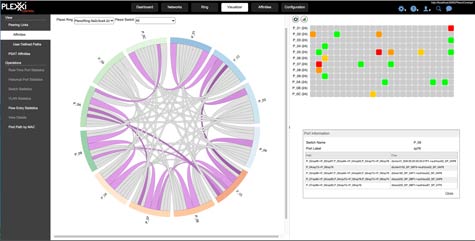Most applications are made up of individual workloads that are distributed across multiple processors. And often, those workloads run on different machines that are connected to each other across a virtual network. The problem is that most network managers don’t have a lot of visibility into how much bandwidth any given workload is consuming.
To provide that visibility, Plexxi today unveiled an upgrade to its network fabric that makes it possible for the controller to segment a virtual network by individual workload. Plexxi CEO Rich Napolitano says the latest version of Plexxi Control, which is extensible across private and public cloud environments, makes it possible to unify local and wide area networks, and extend the network fabric to any storage system connected to the network.
Most networks today are tangled messes of virtual network connections being made across multiple types of physical networks. Plexxi Control 2.4 coupled with version 2.0 of Plexxi Connect software for the first time allows network managers to segment those networks by individual workload, which then enables them to allocate bandwidth according to the criticality of any given workload, says Napolitano. Network managers can also apply specific security policies to a particular workload.
Napolitano says Plexxi accomplishes that task by deploying a messaging bus that IT organizations can connect to any resource attached to a software-defined network (SDN). Plexxi Connect itself comes with built-in connections to VMware vCenter, Nutanix Prism and Hortonworks Ambari platforms.
Arguably, managing IT has never been more complex. A dizzying array of workloads running on multiple virtual and physical machines are constantly trying to establish connections across any number of virtual and physical networks. The probability of multiple issues randomly affecting those applications is high. Anything that lowers those odds on a per workload basis is always going to be a good idea.




